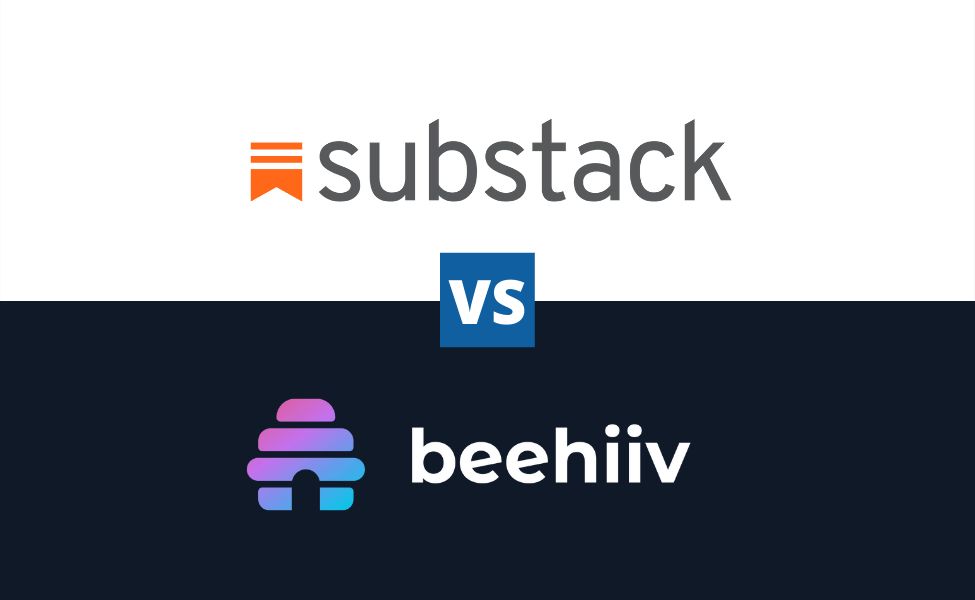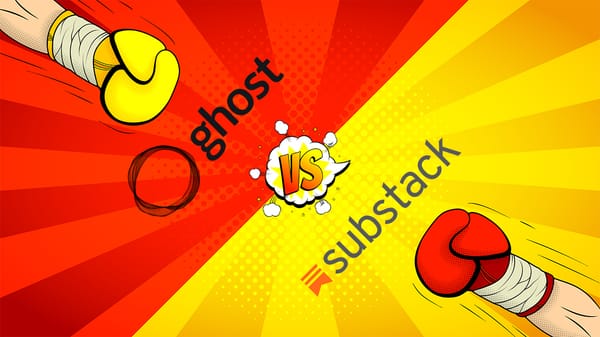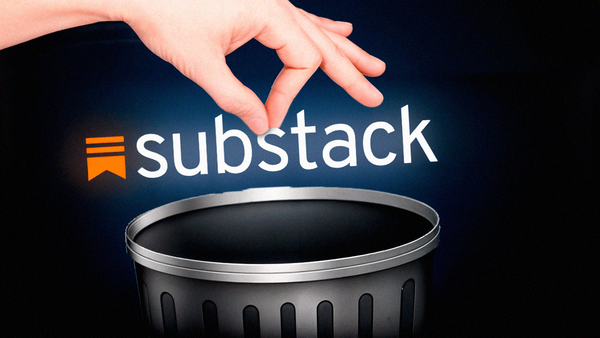Substack vs MailerLite: the pros & cons for newsletters
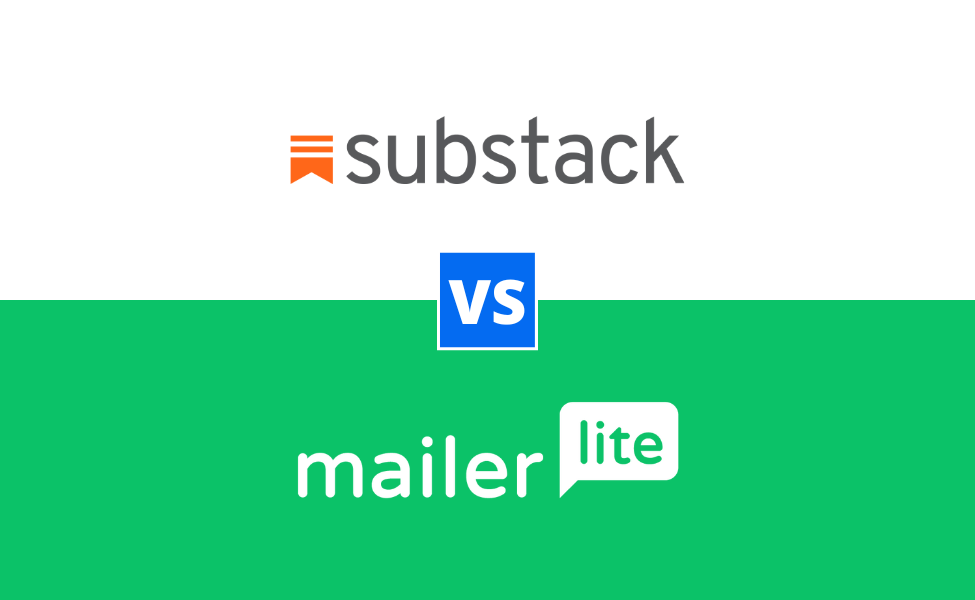
Deciding between Substack vs MailerLite can feel like hitting a crossroads, with each one promising different perks.
You might be scratching your head over Substack's ease of use or MailerLite's advanced features.
And let's not even get started on pricing! But worry not, I'll help you decide which one is better for you.
In this article, you will find how they compare on customization, pricing, ways to monetize your content, SEO, and more.
My name is Tiago Silva, and I am a content creator who has been sharing my experience since 2020. My goal is to give you the best info to help you pick the right tool for your newsletter, while I write about something I enjoy.
Substack vs MailerLite Summary
The main difference is that MailerLite has much better customization and tools to help grow a newsletter, while Substack has a free-forever plan and is better to publish a newsletter and blog using only 1 tool.
The main similarity is that both Substack and MailerLite are good tools for beginners thanks to their affordable prices and ease of use.
MailerLite is fantastic value due to its low prices and great tools for publishing a newsletter. And if you have a blog/site using a tool like WordPress, MailerLite can do wonders due to its integrations.
Substack is a unique tool because you can use it to publish a blog, newsletter, podcast, and create a community, without any technical knowledge required.
You can see this as a dream or nightmare: dream because it's unique, a nightmare because Substack is not the best at any of those things.
So, let's put Substack vs MailerLite in different categories to see how they stack against each other.
MailerLite overview
MailerLite is one of the cheaper options to run a newsletter in the market.
This service has been around since 2005 and has great customization while still being easy to use.
In recent times, it has also been improving as a blogging tool, making it easier for creators to publish their content from a single platform.
MailerLite is the email service I use for my newsletter!
Things I like about MailerLite:
- Great free plan (up to 1,000 subscribers);
- Email automation;
- Great templates and customization options (with and without code);
- Multiple newsletters in the same account.
- Good email analytics;
- Integrations;
- 0% fees;
Things I don't like about MailerLite:
- Blogging capabilities need improvement;
- Paid memberships has flaws;
- Requires physical address to enable sending.
- Incomplete SEO features;
Substack overview
Substack is a publishing platform for newsletters and blogs, with some podcast and social media capabilities called Notes. Created in 2017, Substack became popular by making it easy for writers to monetize their content via memberships.
Substack is free to use with a revenue-sharing model where they take 10% of membership earnings, which is perfect for hobby writers and beginners.
Since its launch, Substack has attracted numerous journalists, authors, and thought leaders who value its super simple interface and direct relationship with readers.
Things I like about Substack:
- Free forever plan;
- Do everything without code;
- Good safety record;
- Publish different types of content (newsletter, blog, podcast, and more);
- Easy to use.
Things I don't like about Substack:
- 10% in membership fees;
- Bad SEO;
- Custom domain costs $50;
- No integrations;
- No email sequences;
- Awful customization;
- Complicated content guidelines (you have to follow their rules or risk getting banned).
Content Creation
Now, I'll explore the process of creating content with each tool.
Content creation experience on Substack
Content creation on Substack is simple yet limiting.
The editor has a minimalist layout with few settings at the top and nothing else on the way.
This makes it pleasant to look at and won't distract you when writing.
This is a dream for beginners because it's easy to learn and use. But frustrating for advanced users.
For example, adding custom HTML on Substack is a pain and can only be done with Google Tag Manager.
This isn't optimal from a privacy perspective and is too complicated for a thing that should be available by default.
For me, this is a big turn-off about Substack.
As a creator, I need the ability to add custom HTML, CSS, and inject JavaScript into some of my posts. I need these things for embedding forms, making tables, and writing code for sponsored tags.
Other important things missing on Substack are:
- Exclusive email content;
- Content toggles;
- Saving content as reusable blocks.
Substack also allows the creation of content with Notes (their Twitter-like social feature) and podcast publishing.
Content Creation Experience on MailerLite
MailerLite gives a lot of versatility to its creators, offering three different editors to work with:
- Drag & Drop Editor: similar to most Drag & Drop editors from major platforms like WordPress, and Squarespace, and is super easy to use.
- Rich-text Editor: lets you write a newsletter with only text, allowing you to focus on just writing.
- Custom HTML Editor: this lets you create a newsletter from scratch exactly as you want with code.
For most people, the Drag & Drop Editor is the right decision. It will give you the right combination of flexibility, customization, and easy of use.

I love the variety of blocks in the MailerLite editor.
They have lots of hero section options with buttons, and images, grid layouts, e-commerce products, and much more.
Whether you want a simple and clean newsletter that is mostly text or a more complete one that will make any serious business proud, MailerLite has your back!
Yet, I must warn you that sometimes MailerLite has some glitches with keyboard shortcuts or when you want to move text around. To avoid those things, I prefer to write in another tool and paste the final product before sending my newsletter.
Content Creation Category winner
MailerLite totally takes the crown When it comes to content creation versus Substack!
MailerLite can handle custom code, which means you get to flex your creative muscles way more.
While Substack keeps it simple, MailerLite lets you dig into the nitty-gritty and make your content exactly how you picture it (if you want).
This lets you do things like adding forms, tables, and a lot more.
All in all, MailerLite is the best choice for creators who desire creative freedom!
Customization
Next comes customization and design.
Customization on Substack
Substack's customization summary:
- Newsletter templates: No;
- Newsletter customization options: Basically none;
- Website themes: Yes, but very limited;
- Possibility to buy a theme from a 3rd-party or create one with a custom code: Only the Tripoli theme from Aspire Themes is available.
Substack's customization is extremely limited for both newsletters and websites.
You can only change basic things like fonts and colors.
Regarding layouts, there are only a handful of options. And you won't have complete control over them or advanced options.
This makes it hard to build a recognizable brand because everyone looks the same.
That's boring!
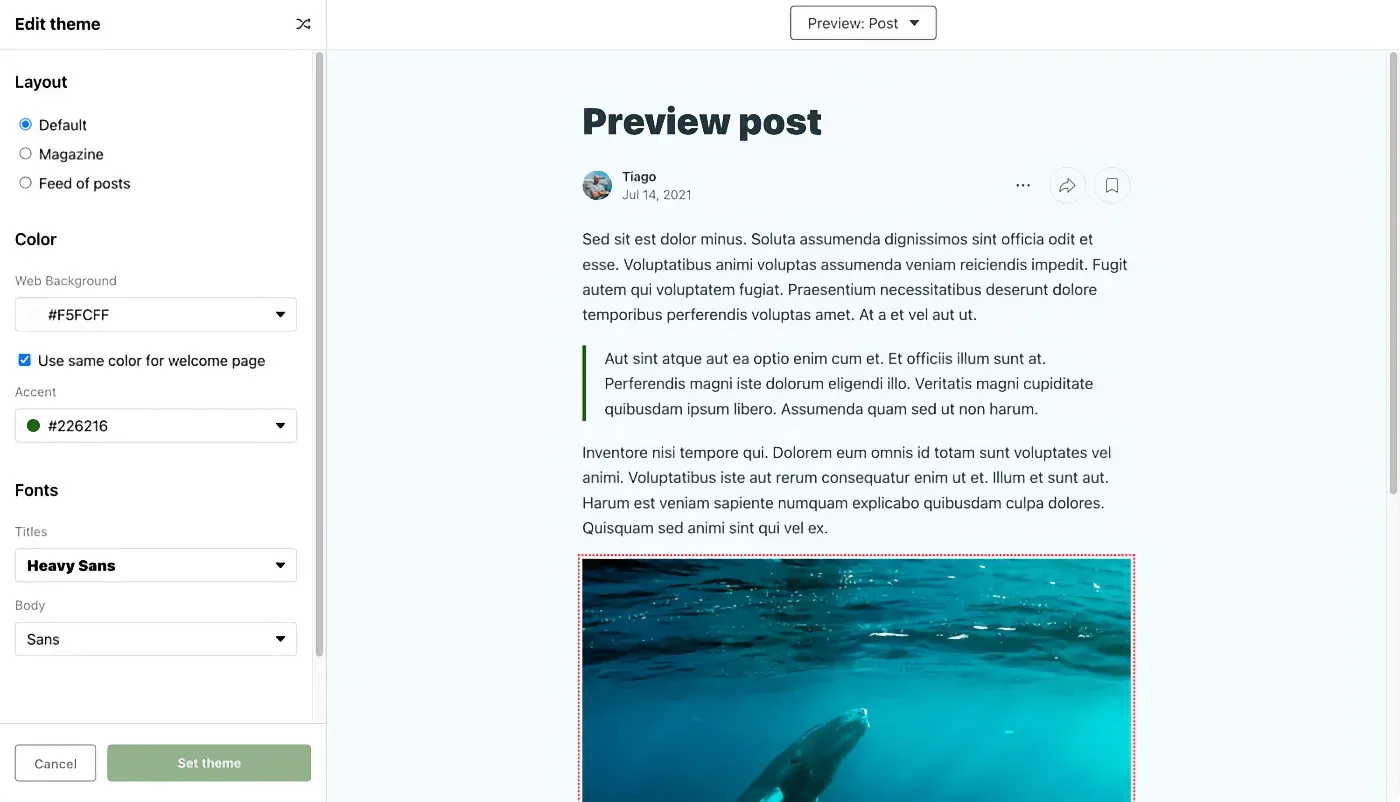
Newsletter customization is even more restrictive.
So, you can't buy or build custom themes for Substack.
To make things worse, you can't remove Substack's branding from your emails, either.
While this simplicity makes Substack easy to use, it significantly limits creators' freedom.
Customization on MailerLite
MailerLite's customization summary:
- Newsletter templates: Yes;
- Newsletter customization options: Great and easy to use;
- Website themes: Yes;
- Possibility to buy a theme from a 3rd-party or create one with custom code: Yes, possible to create theme with custom HTML.
MailerLite has amazing customization options. You can basically do anything you want with your newsletters!
Their template gallery has many templates to choose from, and it’s easy to like at least one of the designs.
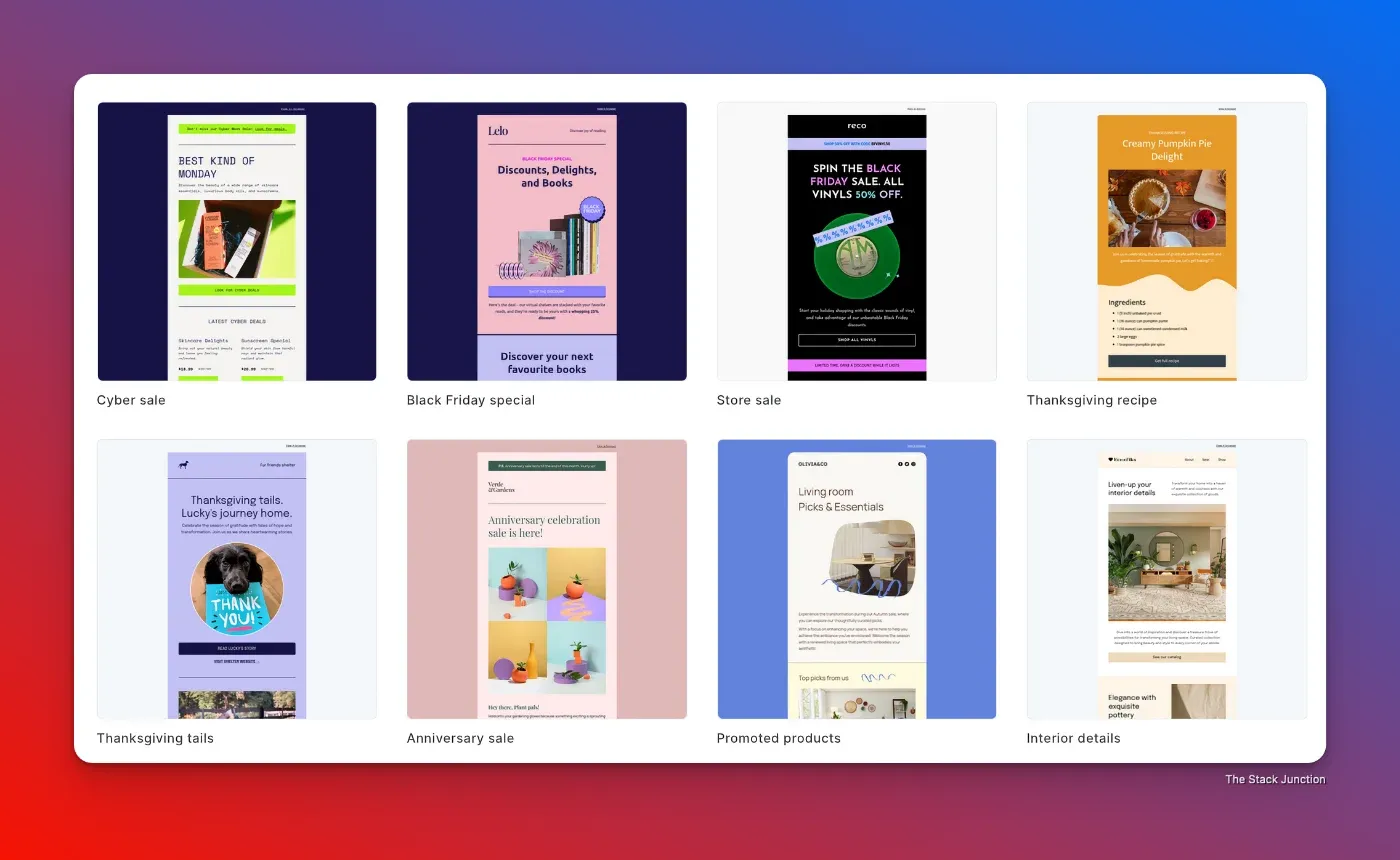
As a MailerLite user, I picked a template and customized it to my style. This saved me a lot of time instead of creating everything from scratch.
Changing a template is super easy to do with the Drag & Drop Editor and allows everyone to express their creativity without effort.
You can also save the templates for future use, saving time and effort to send future newsletters. I love this part as a MailerLite user!
Customization winner
MailerLite has great customization, while Substack sucks!
MailerLite's got a bunch of cool templates that are not only good-looking but also flexible.
This customization flexibility lets you make your newsletters unique.
On the other hand, Substack is kinda basic.
It only lets you change simple stuff, which can be a snooze fest if you're trying to stand out.
MailerLite lets you play with custom HTML. This means that if you have the skills, you can do a lot of cool stuff!
Pricing
Now comes the cost of each tool.
Substack pricing
Substack pricing summary:
- Free plan: Yes, Substack has free forever plan;
- Cheaper paid plan: 10% of the revenue charged via memberships;
Substack has a free forever plan with a revenue-sharing model. Instead of charging a subscription fee, Substack takes 10% of your membership revenue (plus Stripe payment processing fees).
This model is good for beginners and hobby writers since you can use Substack without spending money.
Actually, many use Substack this way.
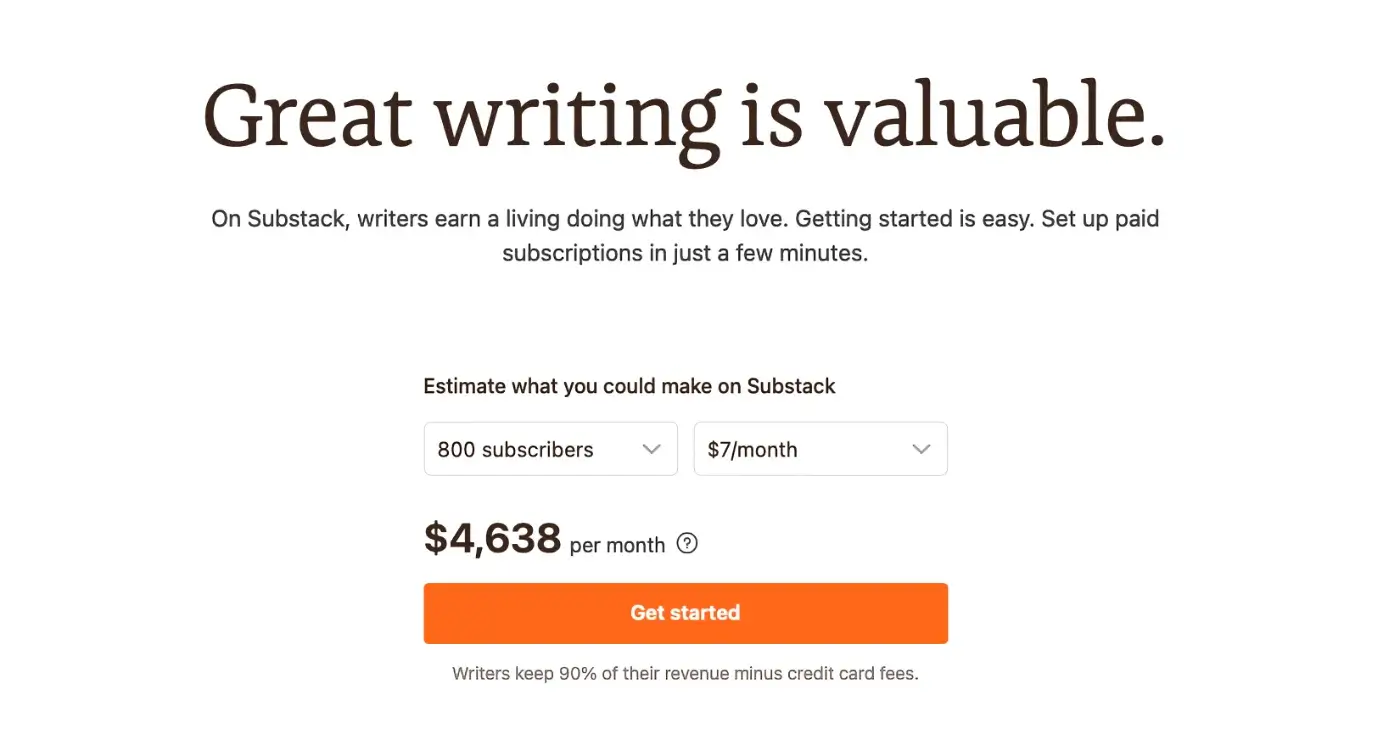
But this model is problematic, which makes creators look for cheaper Substack alternatives.
Yes, you can use Substack for free if you don't charge memberships.
However, the 10% fee becomes expensive when your subscriber base grows.
Imagine readers pay you $50 per year. This is how much Substack keeps:
| Number of subscribers | Your revenue | Substack's fees |
|---|---|---|
| 100 subscribers | $4,500 | $500 |
| 500 subscribers | $22,500 | $2,500 |
| 1,000 subscribers | $45,000 | $5,000 |
| 5,000 subscribers | $225,000 | $25,000 |
I consider these fees outrageous!
I know it's normal for platforms to have usage-based pricing, but Substack goes from being lenient with their forever-free plan to taxing the success of their writers without offering too much in return. And, you should consider if it makes sense to pay these fees.
MailerLite pricing
MailerLite pricing summary:
- Free plan: Yes, up to 1000 subscribers;
- Cheaper paid plan: $9/month (paid annually);
Like other emailing tools, MailerLite also has different plans to choose from.
In MailerLite, you can start with the free plan, which doesn't have many limitations beyond the number of subscribers.
This is a great deal for beginners because they can start a newsletter using a great tool like MailerLite without spending a fortune.
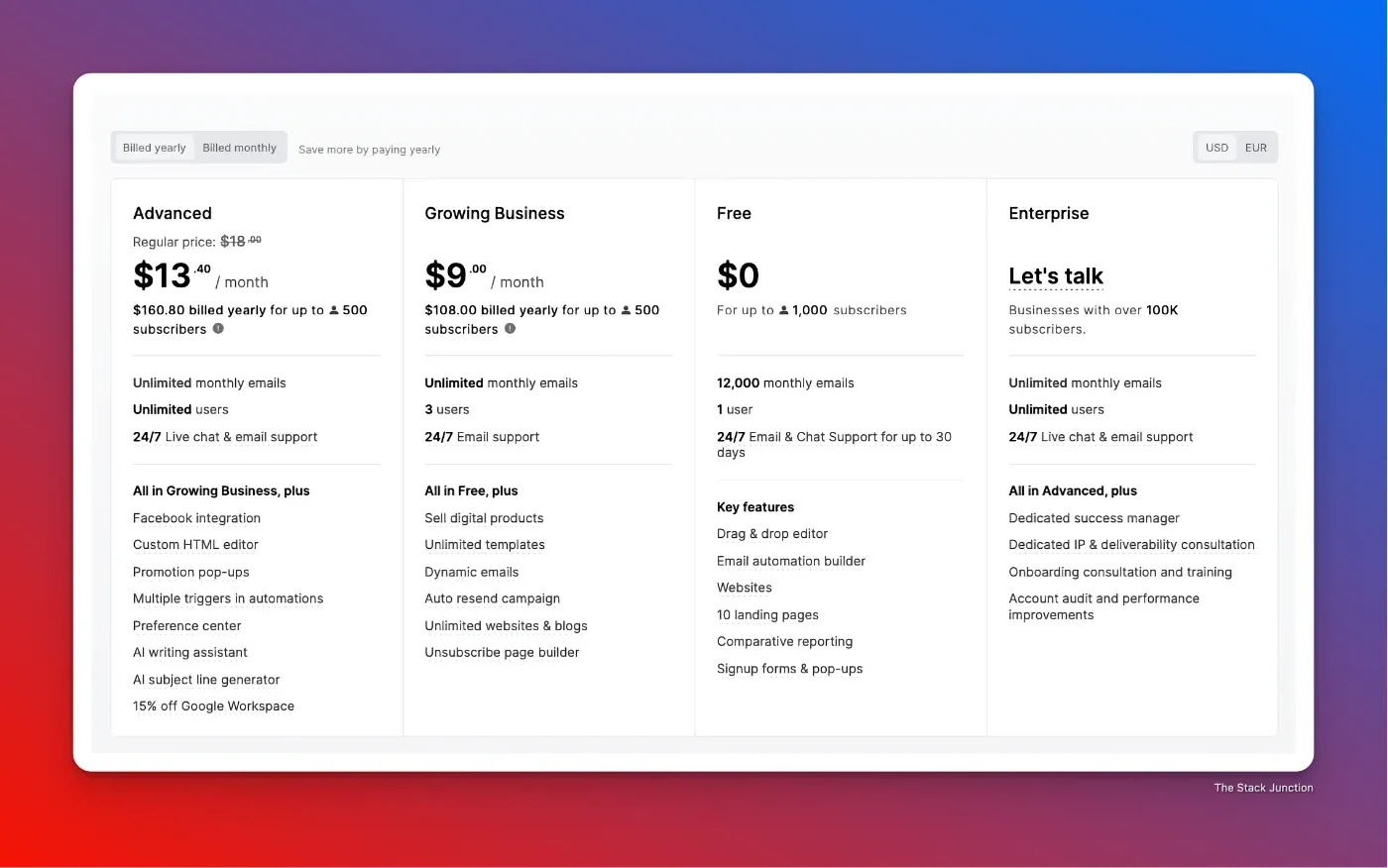
After that, the cheaper paid plan starts at only $9 per month. This will give additional features like the auto resend campaign and the option to sell digital products.
The Advanced Plan unlocks the custom HTML editor and a 15% discount on Google Workspace, just to name a few of the perks.
The pricing is pretty upfront and easy to understand: the more subscribers you have, the more you have to pay.
But MailerLite is still cheaper than most newsletter tools in the market.
Pricing category winner
I like MailerLite's pricing model more than Substack's.
MailerLite is more affordable for most people because prices don’t escalate so fast when you get more subscribers.
However, I have to admit that the Substack free forever plan is very good.
People who are only starting a newsletter as a hobby without the intention of monetizing should pick Substack because it will be free even when you get a lot of subscribers.
Monetization
Now, I'll analyze the options to make money with each platform.
Monetization options on Substack
Monetization options on Substack:
- Paid memberships: Yes
- Sponsorships/ Marketplace ads: No;
- Display ads: No;
- e-Commerce / Digital products: No;
- Donations/ Tips: No;
- Manual embed ads on content: Yes;
- Affiliate marketing: Yes.

Substack has paid memberships as the main way to monetize content. But when a creator charges for access, Substack takes a 10% cut (plus payment processing fees).
While Substack focuses on memberships, creators have found ways to earn through alternative methods. Many writers manually embed sponsored content in their posts. However, this comes with limitations, as Substack lacks tools to properly tag sponsored links, which can be problematic for SEO purposes.
Substack's monetization options are quite restricted compared to other platforms, as it doesn't support display ads or even paid recommendations.
This narrow focus on memberships means creators must rely heavily on memberships.
Monetization on MailerLite
Monetization options on MailerLite:
- Memberships: Yes;
- Display ads (Programmatic advertisement like Adsense): No;
- e-Commerce / Digital products: Yes;
- Sponsorships/ Marketplace ads: No;
- Donations/ Tips: No;
- Manual embed ads on content: Yes;
- Affiliate marketing: Yes;
MailerLite has many monetization options for creators.
I would say that ML is similar to ConvertKit by allowing you to sell any kind of digital product (paid newsletters, e-books, courses, etc.). You can set up those as a subscription or a 1-time purchase.
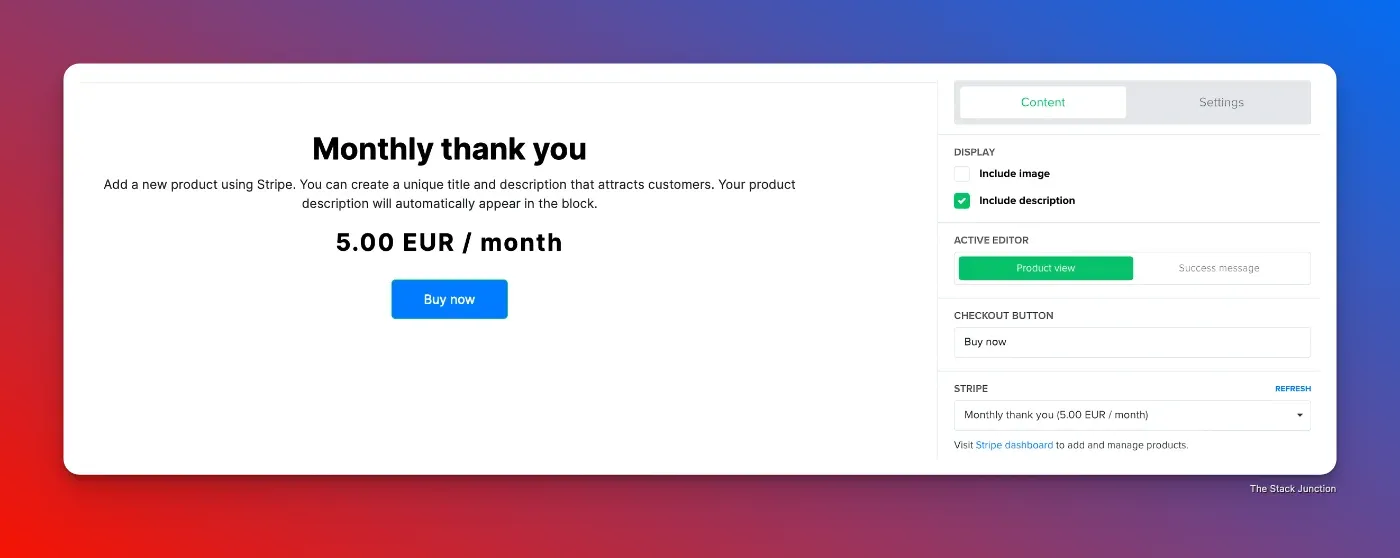
The most commonly used method of selling digital products is a paid newsletter, where subscribers have to pay to receive the content, similar to how it works on Substack or Ghost.
However, what is noticeably missing in MailerLite is an advertisement network.
You can still put ads in your newsletter, but you will have to be the one chasing sponsorships because MailerLite doesn't have a native Ad Network.
Monetization category winner
MailerLite has more and better monetization options than Substack.
Monetizing options on MailerLite include memberships and selling digital products. But paid memberships need some improvements.
Substack is pretty much a one-trick pony: paid memberships.
I know you can have ads on Substack, but those have some 'risks', so I consider it a workaround rather than an option available by default.
SEO
Now, I want to analyze the search engine optimization (SEO) of these tools.
Substack SEO
Important SEO features checklist for Substack:
- Custom domain: Yes;
- HTTPS: Yes;
- URL slug customization: Yes;
- Meta description: Yes;
- Sitemap: Yes;
- Canonical tags: Yes;
- Redirects: No;
- Robots.txt: Yes;
- Website speed: Yes, website speed is good;
Substack's SEO looks decent on paper but, in practice, performs poorly.
The platform has important features like custom meta descriptions, XML sitemaps, and schema markup. But the biggest issue is that Substack publications struggle to rank well in search engines.
Writers have complained about this limitation since 2021, with minimal improvements from Substack to address the problem. Casey Newton even said that "the only way a Substack grows is through tweets. I am like 85% serious when I say this".
Substack also lacks the necessary technical SEO capabilities that advanced users need. Users cannot create redirects, customize canonical tags, or control noindex settings for individual posts. The redirects part is a big, big problem!
To show how bad is Substack's SEO, I have a question for you:
Have you seen a Substack publication on Google results without using the word "Substack" in the search? Me neither.
Substack also charges $50 to enable custom domains, which I don't appreciate (but at least the feature exists).
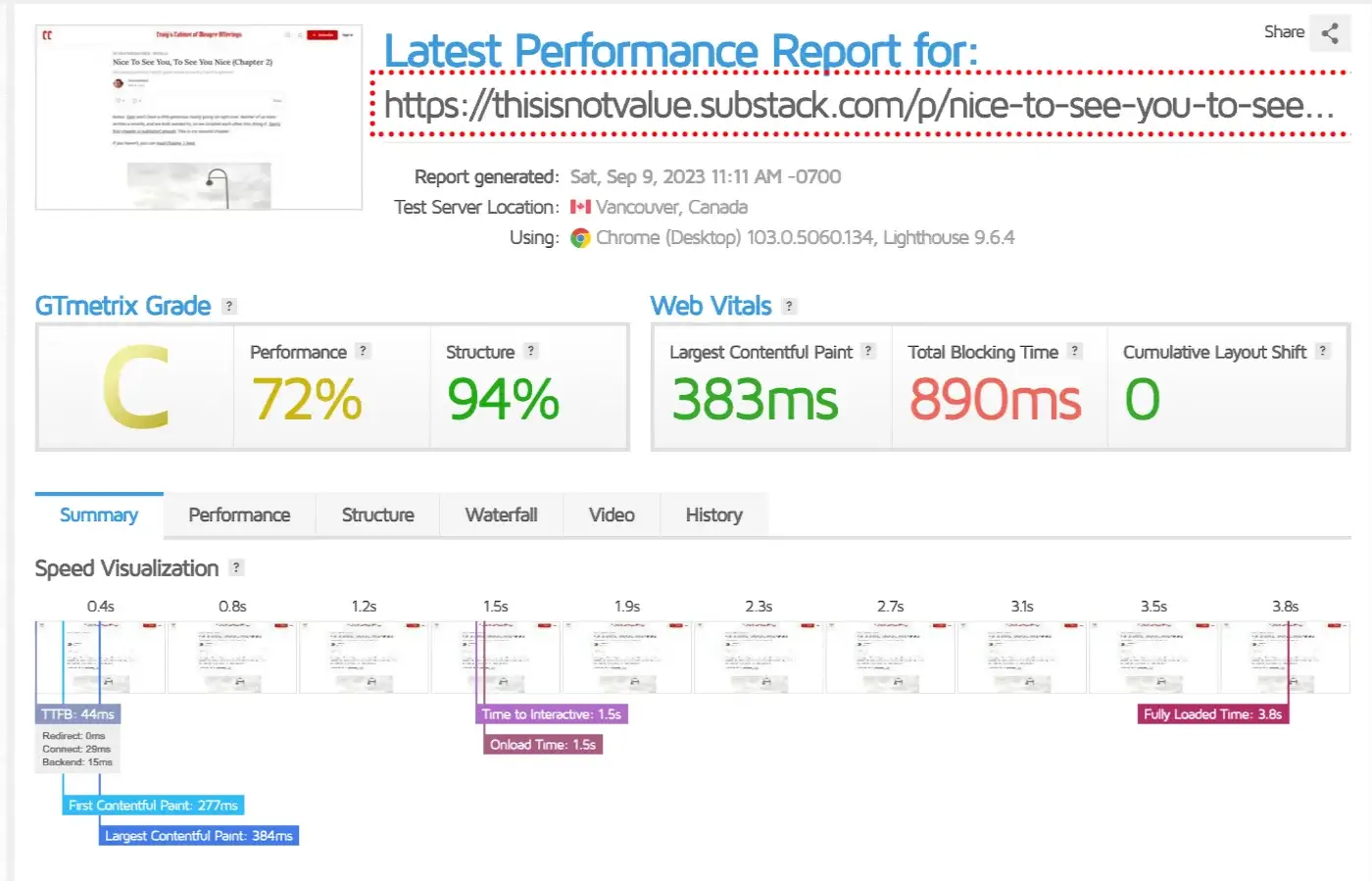
MailerLite SEO
Important SEO features checklist for MailerLite:
- Custom domain: Yes;
- HTTPS: Yes;
- URL slug customization: Yes;
- Meta description customization: Only for home page;
- Sitemap: No;
- Canonical tags: No;
- Redirects: No;
- Robots.txt: No;
- Website speed: Good;
MailerLite has a lot to catch up on in terms of SEO.
To be fair, MailerLite is mainly a newsletter tool, so they didn't need to have good SEO to be a great service.
However, they have introduced some blogging capabilities to MailerLite. This will make it possible for creators to use MailerLite as a newsletter and blog, similar to Substack.
And similar to Substack, MailerLite leaves a lot to be desired regarding SEO.
MailerLite-landing-page-speed-test-the-stack-junction
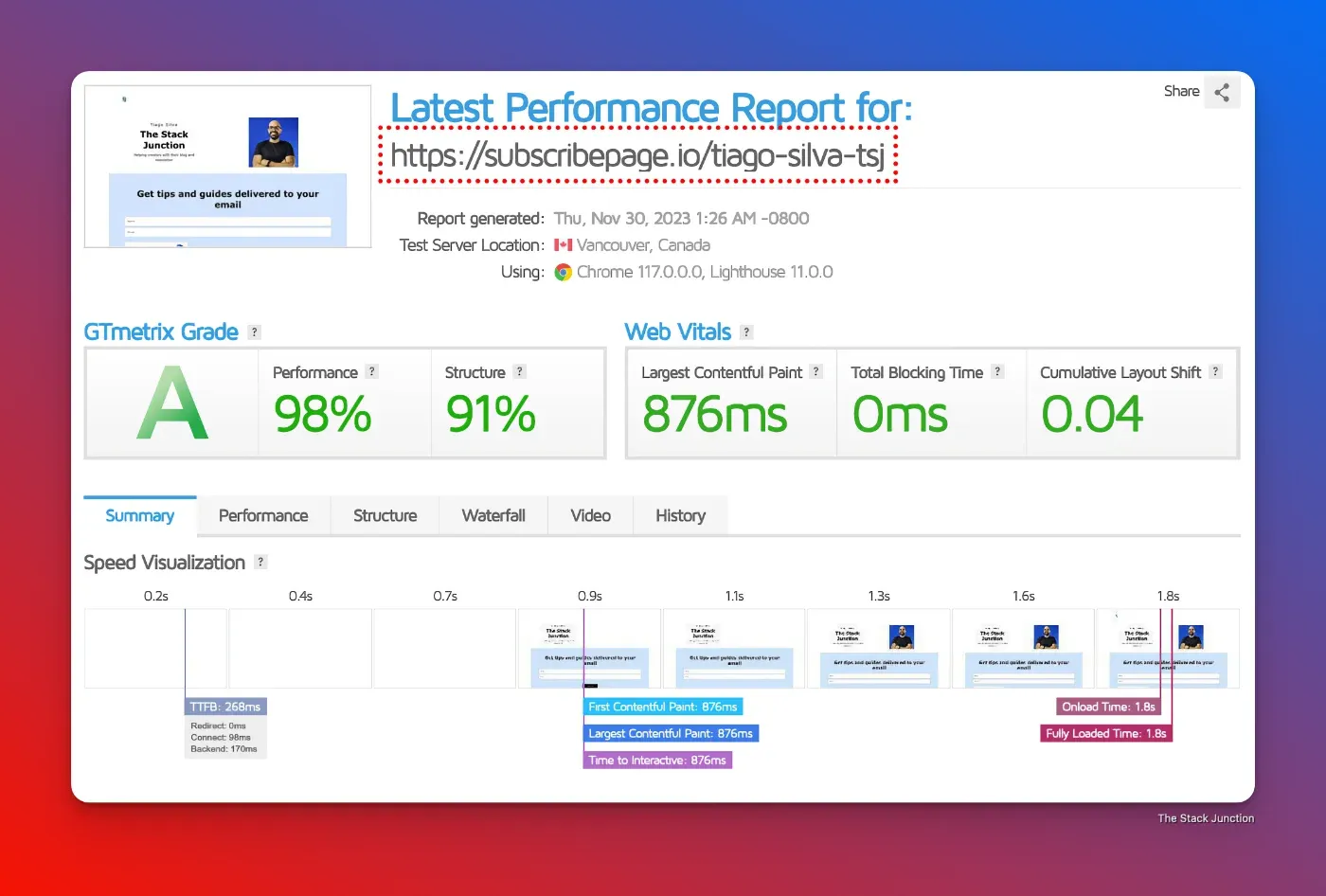
From what I can see, MailerLite doesn't have the tools needed for a creator to make a blog and find success ranking well on search engines.
MailerLite doesn't have important things like redirects, let us define canonical tags, and a lot more.
At the moment, MailerLite SEO only has the bare bones.
SEO category winner
Picking the best SEO tools between Substack and MailerLite is like picking a not-so-bad option.
Substack isn't exactly an SEO powerhouse, far from it! But MailerLite is still worse regarding SEO.
I don't think you can expect any kind of success with either tool.
At least, Substack has meta descriptions, sitemaps, and canonical tags.
While MailerLite is missing some of the basics—no sitemap, no robots.txt, and no canonical tags—stuff you need for SEO
Growth
Let's compare the tools when it comes to growth tools. These are the small marketing things that can have a big impact on the business.
Substack growth tools
Substack's most important Growth tools checklist:
- Plugins/integrations: No;
- Automated email sequences: No;
- Referral program: No;
- Subscriber segmentation: Limited (only segments between free and paid);
- Custom sending domain: No;
- A/B testing (titles): No;
- RSS feed: Yes;
Growing a Substack publication has been the biggest problem since forever.
Where do I even start...
The platform doesn't have email automation, A/B testing for titles, and subscriber segmentation is very limited.
To counter these flaws, Substack developed its internal Discovery tool and its Twitter-clone called Notes.
This move towards a more social approach makes Substack a unique tool. It also increases the power of their network as more writers use Notes.
In 2022, Substack also released newsletter recommendations. This lets one writer recommend another newsletter to its subscribers.
While this creates network effects where creators can help each other grow, it's one of the few growth features available.
MailerLite growth tools
MailerLite's most important Growth tools checklist:
- Plugins/integrations: Yes;
- Automated email sequences: Yes;
- Referral program: Yes, with integration;
- Subscriber segmentation: Yes;
- Custom sending domain: No;
- A/B testing (titles): Yes;
- RSS feed: Yes;
MailerLite growth capabilities are impressive.
The thing I like the most is their automated email sequences. This lets you create welcome email sequences where you can introduce yourself to new subscribers over the first days. Or even send abandoned cart emails to remind people about products they where thinking about but didn't buy.
You can use these automations for a gazillion of things!
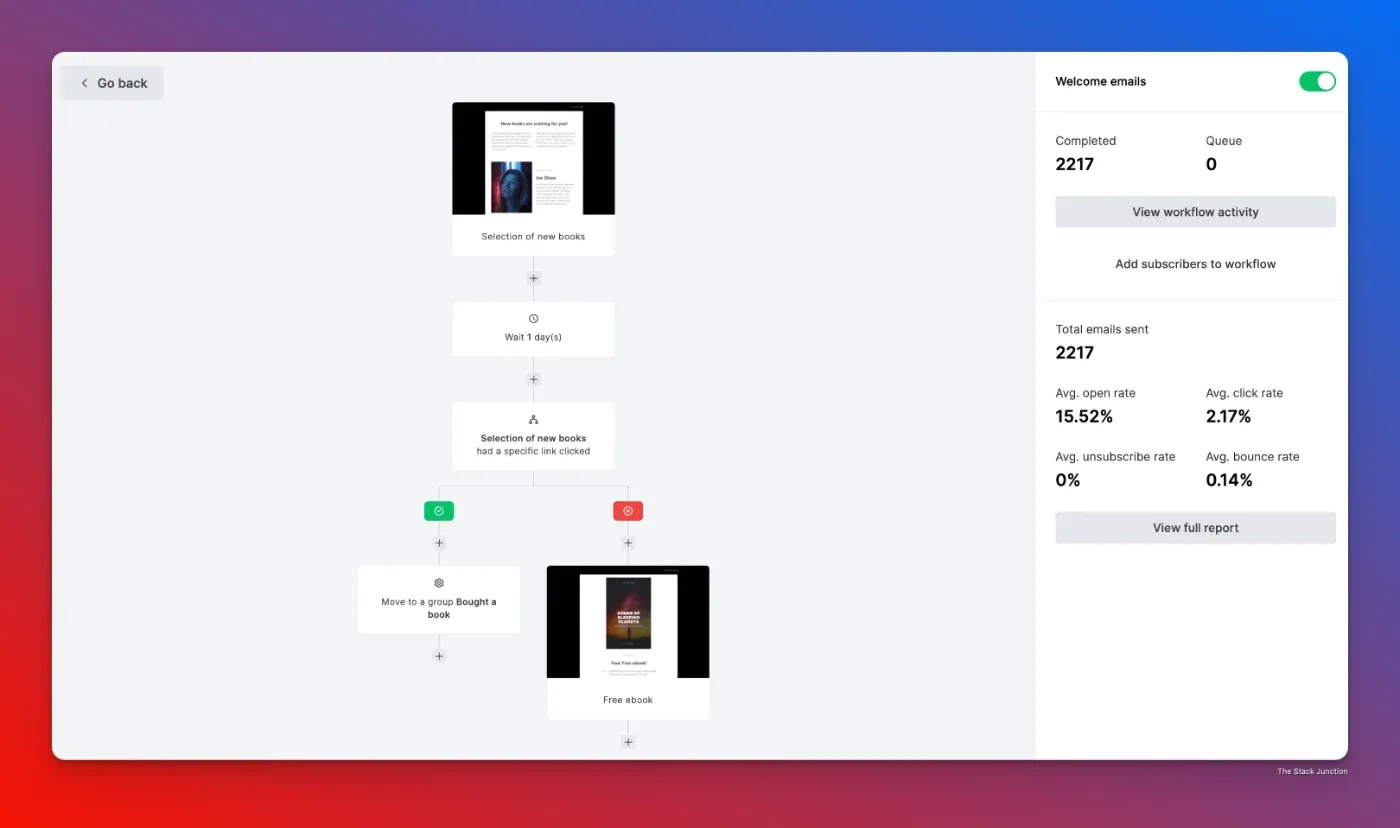
MailerLite also has a massive list of integrations, allowing you to use it in combination with other tools. For example, I use Ghost and MailerLite together. But you can integrate MailerLite with Shopify or even WordPress.
All those things, plus other small features, make it easier to grow the newsletter subscriber count.
Growth category winner
MailerLite is better than Substack when it comes to growing a newsletter.
MailerLite has automated email sequences, which lets you create welcome emails or help sell products.
Plus, MailerLite allows integrations via API with your favorite apps and websites. This will open the door to many possibilities.
On the opposite corner you will have Substack with almost no 'growth tools', other than their site where they hope to have people read several newsletters to help with growth.
Final Thoughts
MailerLite and Substack are 2 very different tools, as you just saw in this comparison.
MailerLite is more suited for creators who want a great newsletter tool, especially if you want to have a site/blog using a different option like WordPress or Ghost.
With great customization and an affordable price, MailerLite is a fantastic email service for creative people.
Substack will be more suited for creators who want to use the same tool for their newsletter and 'blog'.
Substack also has some built-in community features, which reinforces its motto of being the tool to publish all kinds of content.
I don't think Substack is the best at any particular thing, but they certainly are a unique option.
Between Substack and MailerLite, I consider MailerLite the best newsletter tool.





